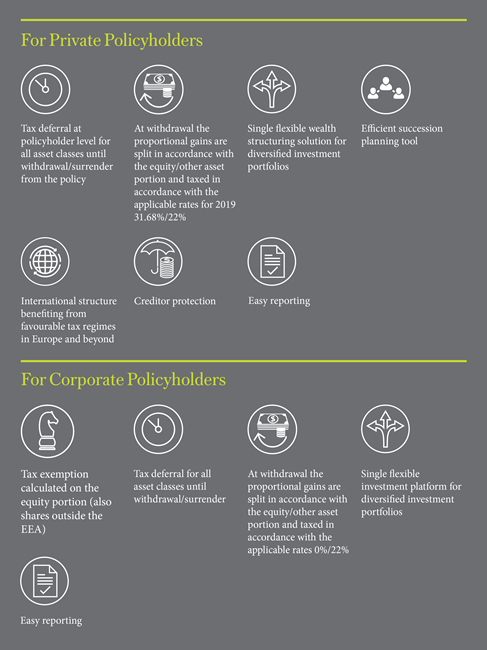written by Marjanne Olesen, Country Manager Norway & Emilia Weijola, Senior Wealth Planner at Lombard International Assurance. Read also in Norwegian.
As of January 2019 onwards, the equity portion of a capital assurance falls under the tax exemption method, bringing myriad of wealth planning opportunities both for high-net worth individuals and investment companies. In the light of Brexit, capital assurance can be used to optimise the investments in the United Kingdom in order to support the needs of entrepreneurs, family businesses and other private clients.
What’s interesting to know

What does it mean in more detail?
For corporate policyholders as of 2019
- For corporate policyholders with a standard 1% death cover, the tax exemption method will apply to the gains portion related to equity under the same conditions as income from investment funds. Income not exempt under the tax exemption framework would be taxable at the proposed corporate income tax rate of 22%.
- The tax exemption method is applicable to all shares held within the policy (both within and outside the European Economic Area).
In the light of Brexit, HNWIs and their advisors might need to consider the following:
- Today, Norwegian corporate shareholders investing in the UK can benefit from tax exemptions on dividend distributions and sale of shares. Under a scenario of a Hard Brexit, the Tax Exemption Method for a Norwegian corporate investor will be contingent on the fact that the Norwegian investor owns at least 10% of the shares in the British company and has owned these shares for at least two years. If these conditions are not met, dividends and equity gains are taxable.
- On the Norwegian side, the question that hasn’t been answered yet is whether latent gains that Norwegian companies have in the UK will still fall under the exemption method post-Brexit.
- In case there is a Brexit without agreement, the UK will most likely not be regarded as part of the EEA as soon as they leave the EU.
- If however the UK shares are transferred to the capital assurance, the Tax Exemption Method will remain in effect.
For private policyholders as of 2019
- Unit-linked life assurance policy with a standard 1% life cover will benefit a 25% net wealth tax rebate and tax exempt shielding interest to the extent the policy assets are invested in shares. The current 1% can be capped on request of the policyholder.
- At surrender/withdrawal, the proportional gain related to the average equity portion of the policy is taxed as share income with a proposed tax rate of 31.68%. The proportional gain related to other investments will be taxed at the proposed ordinary income tax rate 22%.
- If the share portion/other securities exceeds 80% of the investments, the income will be treated fully as equity income/ordinary capital income.
- Transitional rules will apply for existing policies. The equity portion per 1 January 2019 will serve as a basis for the taxation under the new rules.
- Section 5-20 of the income tax act which currently regulates taxation of life assurance will apply only to life assurance contracts with a minimum of 50% life cover in addition to the surrender value or a fixed amount of 100% of the premium in addition to the surrender value.
-----------------------------------------------------------------------------------------------------------------------------------------------------
More reading for you
-----------------------------------------------------------------------------------------------------------------------------------------------------